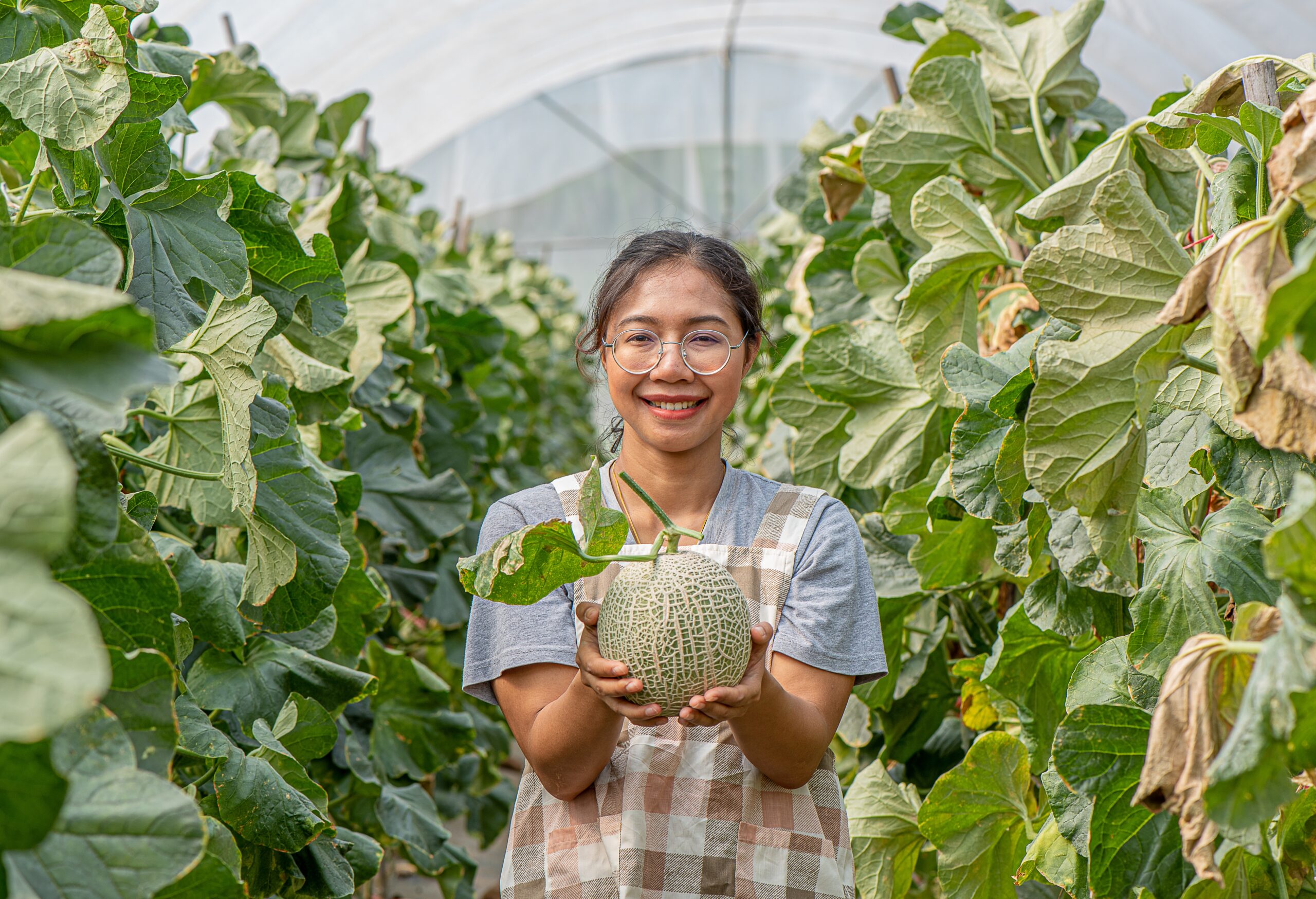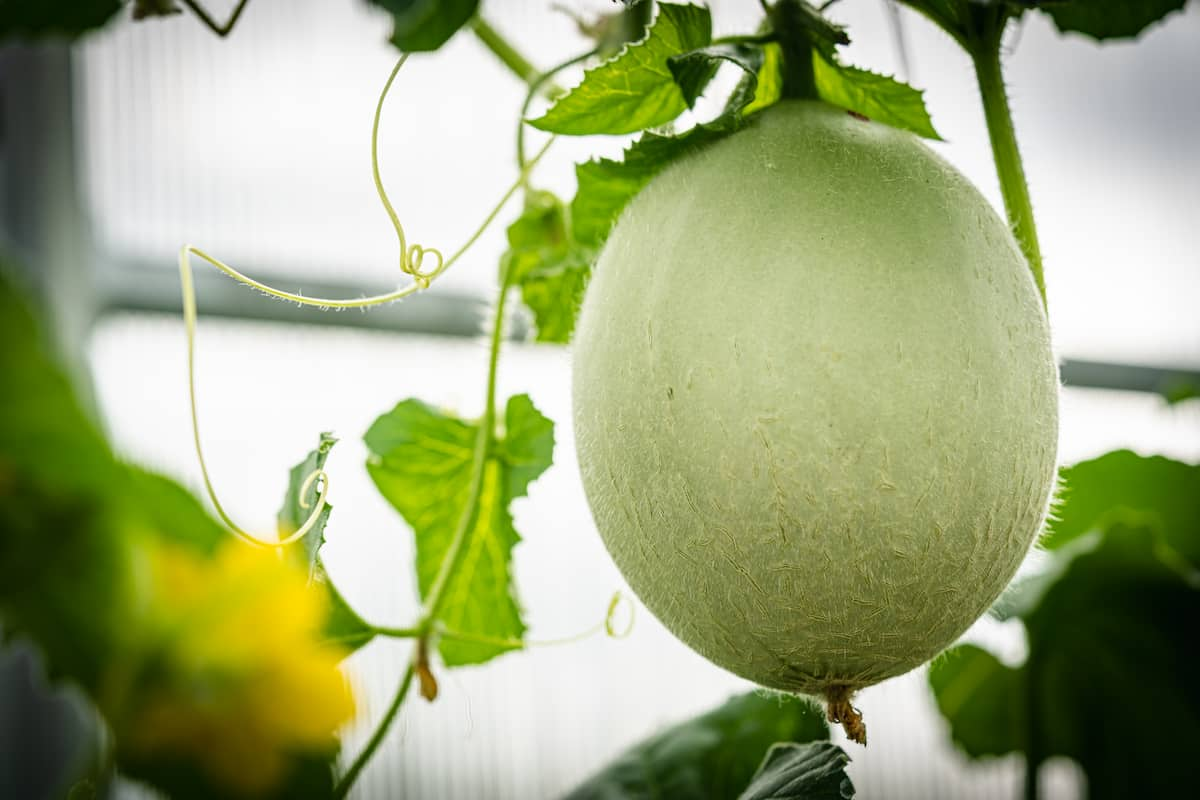Muskmelon is a nutritious fruit that is rich in vitamins and minerals. However, the yield can be affected by the number of female flowers produced. Increasing the number of female flowers is crucial since they develop into muskmelons. Providing optimal growing conditions, using gibberellic acid, and proper pruning techniques can increase the number of female flowers.

Research has shown that gibberellic acid can increase the number of female flowers by up to 44%, while pruning techniques can increase it by up to 67%. These methods can significantly improve muskmelon yield and ensure a bountiful harvest.
How to Increase Female Flowers in Muskmelon/Cantaloupe
Introduction to Muskmelon Cultivation
Muskmelon, also known as cantaloupe, is a widely grown fruit for its sweet and juicy flesh. It belongs to the cucurbit family and can be cultivated in various climatic conditions. Adequate irrigation, well-drained soil with good fertility, and sufficient sunlight are essential for muskmelon farming. Farmers can plant muskmelon through direct seeding or transplanting seedlings.
Consistent watering during flowering and fruit development stages is vital as water stress can affect the crop yield. Adequate fertilizer application is necessary for high yield and good fruit quality. Proper pest management practices are necessary as the crop is prone to pests and diseases such as spider mites, aphids, and powdery mildew. Muskmelon is harvested when it is fully mature and has a sweet aroma. It is commonly consumed fresh or used in different culinary applications.
Understand the Anatomy of Muskmelon Flowers
Muskmelon flowers are either male or female reproductive organs. Male flowers have a thin stem, while female flowers have a fruit at the base. The flower has four parts: sepals, petals, stamens, and pistils. Sepals protect the bud, petals are brightly colored, stamens are male reproductive organs consisting of a filament and anther, and pistils are female reproductive organs consisting of a stigma, style, and ovary.
Pollination occurs when bees and insects transfer pollen from male to female flowers, leading to fruit development. Understanding muskmelon flower anatomy is vital for successful cultivation and fruit production.
Best Variety of Cultivation Muskmelon
Muskmelon is a highly cultivated fruit, with popular varieties including Honeydew, Cantaloupe, Galia, Charentais, Sharlyn, Crenshaw, Casaba, Persian, Santa Claus, Ogen, Juan Canary, Hami, Athena, French, Piel de Sapo, Honey Globe, Cavaillon, Crane, Collective Farm Woman, and Top Mark melons.
Optimal Growing Conditions for Muskmelon
- Climate: Muskmelons grow best in warm weather conditions with temperatures between 70-80°F during the day and 60-70°F at night.
- Soil: The soil should be well-draining, rich in organic matter, and have a pH of 6.0-6.5.
- Water: Muskmelons require consistent watering, preferring deep, infrequent irrigation to promote root growth.
- Fertilizer: The plants should be fertilized with a balanced fertilizer high in phosphorus and potassium.
- Sunlight: Muskmelons require full sun exposure to develop properly.
- Spacing: Muskmelon plants should be about 2-3 feet apart for proper growth and airflow.
- Pollination: Muskmelons require pollinators such as bees and butterflies for successful fruit sets.
- Pest and disease control: Muskmelons are susceptible to various pests and diseases, so it is essential to use proper preventive measures such as crop rotation, disease-resistant varieties, and insecticides to control pests and diseases.
In case you missed it: How to Increase Female Flowers in Guava: Explained in 10 Simple Steps

Muskmelon Flowering Stage
The flowering stage of muskmelon marks the onset of fruit development and is a critical period in the plant’s growth cycle. Male flowers appear before female flowers, and both are necessary for successful pollination and fruit set. Pollination is aided by bees and other insects, which transfer pollen from the male to the female flowers. Flowers typically bloom for four to six weeks, and fruit development begins after successful pollination. Adequate irrigation and fertilization are crucial during this stage for healthy flower and fruit development.
Factors that Affect Less Female Flowers in Muskmelon
- Temperature: High temperatures can promote the development of more male flowers and fewer female flowers. According to research, the optimal temperature range for muskmelon growth and female flower production is between 70-85°F. Temperatures above 90°F can cause flower drop and reduce fruit set.
- Light: Muskmelon requires full sunlight for at least 6-8 hours per day. A lack of sunlight can reduce female flower production and result in lower yields. Inadequate lighting can also lead to weaker vines and delayed flowering.
- Soil nutrients: A deficiency of certain nutrients, such as potassium and phosphorus, can result in fewer female flowers. Adequate soil fertilization with balanced nutrients can help promote female flower development. Research suggests that a soil pH of 6.0-7.5 is ideal for muskmelon growth and flower production.
- Watering: Overwatering or underwatering can cause stress in the plant, resulting in reduced female flower production. To promote healthy growth, the soil should be kept consistently moist, not waterlogged.
- Pests and diseases: Infestations of pests or diseases can damage plants and affect flower production in muskmelon. Proper pest and disease management practices, such as using organic pesticides and practicing crop rotation, are essential to prevent damage to the plants and promote healthy growth.
10 Simple Tips to Increase Female Flowers in Muskmelon
- Choose a variety of muskmelon that naturally produces more female flowers.
- Plant in well-draining soil and full sun.
- Use high-phosphorus fertilizer to promote flower growth.
- Keep the soil mostly moist but not overly wet.
- Provide adequate space for the plant to grow and avoid crowding.
- Train vines horizontally to encourage lateral growth and more flowers.
- Avoid over-fertilizing, which can cause excessive vegetative growth at the expense of flowers.
- Prune off male flowers to divert energy toward female flower production.
- Hand-pollinate female flowers using a small brush or by transferring pollen between flowers.
- Control pests and diseases, which can reduce flower production by causing plant stress.
In case you missed it: How to Increase Female Flowers in Squash: Explained in 10 Simple Steps

Conclusion
To increase the production of female flowers in muskmelon, it is necessary to choose the appropriate variety, provide adequate spacing, fertilize the plants properly, maintain the optimum pH level of the soil and water consistently, and ensure proper pollination. Pruning, providing adequate light and warm temperatures, and controlling pests are crucial factors. By following these ten simple steps, gardeners can enhance the yield of muskmelon fruits.
- Feed Your Flock for Less: Top 10 Tips to Save on Chicken Feed
- Ultimate Guide to Ossabaw Island Hog: Breeding, Raising, Diet, and Care
- Hatching Answers: The Top 10 Reasons Your Chickens Aren’t Laying Eggs
- Eggs and Economics: Breaking Down the Cost of Raising Backyard Chickens
- Defend Your Greens: Proven Methods to Keep Iguanas Out of Your Garden
- Ultimate Guide to Cinnamon Queen Chicken: A Comprehensive Guide for Beginners
- Ultimate Guide to California Tan Chicken: Breeding, Raising, Diet, Egg-Production and Care
- Ultimate Guide to Marsh Daisy Chicken: Breeding, Raising, Diet, and Care
- 10 Types of Chicken Farming Businesses You Can Start for Profits